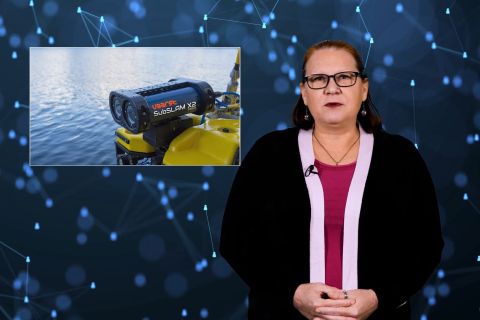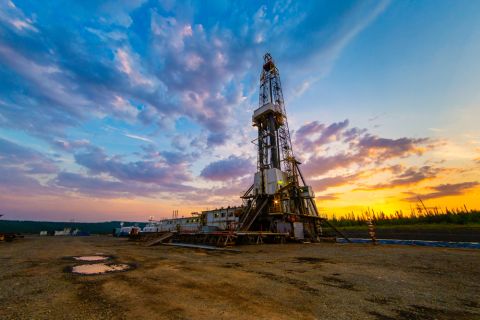Anadarko Petroleum Corp.'s planned purchase of Howell Corp. for approximately $200 million in cash launches an expansion in Anadarko's oil production in Wyoming. The total deal value is $265 million, including the assumption of approximately $65 million of Howell debt. "Howell's Salt Creek Field is one of the largest remaining enhanced oil recovery opportunities in the Lower 48," Anadarko chairman and chief executive officer John Seitz says. To develop the resources, Anadarko plans to invest $200 million during the next four years, adding another 150 million barrels of reserves. Separately, Anadarko plans to acquire the right to purchase for $3 million in cash significant quantities of carbon dioxide from an affiliate of Houston-based Petro Source Investments Inc. and exclusive rights to market and transport CO2 from the LaBarge Field into Wyoming's Powder River Basin. Anadarko also announced plans to build a $27-million, 125-mile CO2 pipeline in 2003, with nominal capacity of about 250 million cubic feet per day. Half of the amount would be used at the Salt Creek Field, to enhance recovery; half may be sold to other Wyoming fields. Market reaction generally was positive. Howell stock jumped nearly $7 to close at $20.53 the day of the announcement. Anadarko stock was mostly unchanged at about $44. "Opportunities of this magnitude are hard to come by," says analyst Frank D. Bracken III of Jefferies & Co. "Anadarko, by virtue of its capital wherewithal and ingenuity, was able to put this one together. You can justify the project on every level. It appears profitable, both in terms of purchase price and fully developed costs. It also improves optics on the company's production growth rate, which had been lacking. It goes a long way in juicing those up." The CO2 supply and transportation elements are what make the deal work, according to Shannon Nome of J.P. Morgan Securities Inc. "Howell's $9-per-barrel operating costs are high. Getting CO2 below market rates is what's needed, which Anadarko accomplished. It's small, relative to the company's size. But it will help Anadarko's annual production growth by a percentage point or two, which is not shabby." The acquisition will enhance Anadarko's stated goal of expanding its Rockies operations, notes Jason Gammel of Prudential Securities Inc. "The company's experience in CO2 miscible flood recovery techniques has been demonstrated already in its other oil-producing properties and accounts for 40% of its oil production." Lloyd Bernie, who follows Anadarko for Morgan Stanley & Co., warns that the deal's key risk is that actual recovery from the planned CO2 floods would be materially below the 15% to 20% that Anadarko is expecting. But the company has been successful in tertiary recovery in Alaska, Algeria and Texas, he adds, and believes the technique can be applied to the Powder River Basin. "This is the key data point to focus on going forward." Anadarko will fund the acquisition of Howell, which may close in early 2003, from approximately $200 million of proceeds from a sale of Canadian heavy-oil properties and from its $2.5-billion capital budget. "Essentially, we are swapping low-margin properties for higher-potential assets," Seitz says. "We sold low-margin, low-profit properties in Canada, representing 20,000 barrels per day of production at about a $7-per-barrel margin, to acquire properties that will produce up to 35,000 barrels per day with about a $13.50-per-barrel margin." Anadarko based its estimates for the Howell properties' production margins on mid-cycle prices of $21 oil and $3 gas. "We like this project. It is one that's balanced with our ongoing gas exploration and development efforts on the land grant we acquired when we merged with Union Pacific Resources," Seitz adds. The acquisition differs from other recent U.S. asset purchases in that it involves more oil than gas. Bracken suggests it would have been harder to accomplish if gas had been the primary asset. "Gas opportunities of this size are hard to come by. People are bullish on the price, and they're getting a lot of scrutiny overall." He adds, "What's impressive is the kind of returns that Anadarko will be able to generate on this transaction. The missing piece is the pipeline and CO2 volumes from LaBarge that allowed it to aggregate the necessary elements. Bottom line, Anadarko was able to pull together a deal that any of its peers would have been happy to get. It provides a growth wedge, with good economic volumes."
Recommended Reading
TGS, SLB to Conduct Engagement Phase 5 in GoM
2024-02-05 - TGS and SLB’s seventh program within the joint venture involves the acquisition of 157 Outer Continental Shelf blocks.
2023-2025 Subsea Tieback Round-Up
2024-02-06 - Here's a look at subsea tieback projects across the globe. The first in a two-part series, this report highlights some of the subsea tiebacks scheduled to be online by 2025.
StimStixx, Hunting Titan Partner on Well Perforation, Acidizing
2024-02-07 - The strategic partnership between StimStixx Technologies and Hunting Titan will increase well treatments and reduce costs, the companies said.
Tech Trends: Autonomous Drone Aims to Disrupt Subsea Inspection
2024-01-30 - The partners in the project are working to usher in a new era of inspection efficiencies.
Drilling Tech Rides a Wave
2024-01-30 - Can new designs, automation and aerospace inspiration boost drilling results?





